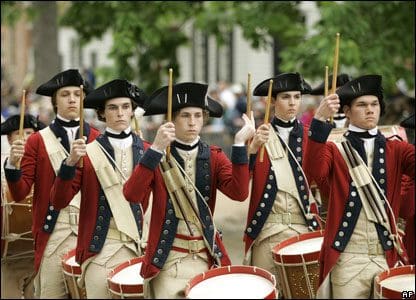 To visit Colonial Williamsburg in Virginia is to take a step back into 18th-century history. The blacksmith’s hammer rings out as he repetitively strikes the glowing metal that he is crafting into a horseshoe. A lady gathers her layers of long skirts as she steps from a horse-drawn carriage into the entrance of the millinery shop. The fife and drum corps plays battle songs as they march down the cobblestone street in revolutionary uniform.
To visit Colonial Williamsburg in Virginia is to take a step back into 18th-century history. The blacksmith’s hammer rings out as he repetitively strikes the glowing metal that he is crafting into a horseshoe. A lady gathers her layers of long skirts as she steps from a horse-drawn carriage into the entrance of the millinery shop. The fife and drum corps plays battle songs as they march down the cobblestone street in revolutionary uniform.
Living History at Colonial Williamsburg
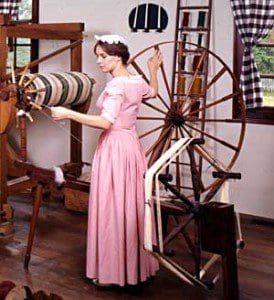
The Colonial Williamsburg historic area is a 300-acre living museum of a revolutionary city, the largest of its kind, with hundreds of restored and historically furnished buildings. Costumed interpreters bring the stories and hardships of everyday colonial life alive while they portray the drama and events that led to America’s independence. Tradesmen, shopkeepers, political figures and slaves are all represented in this unique living museum of the Revolutionary hotbed.
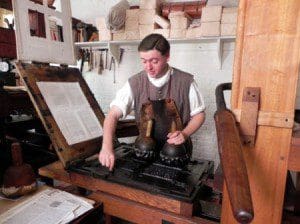
In the 1700’s British outpost of Colonial Williamsburg, there were no big box stores for the colonist to run out and pick up supplies. Each trade and craft had its own place of business. Visitors can meet historically accurate tradesmen and women in their element to learn how and why the silversmith, gunsmith, and foundry, wigmaker, shoemaker and cooper ply their crafts. It’s fascinating for all ages to see the skill and labor invested in making everyday items.
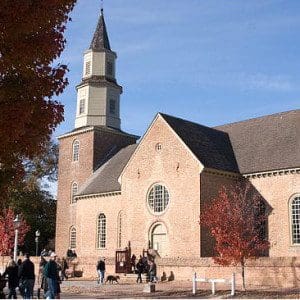
Visitors to Colonial Williamsburg can also see many restored community places. Historic Bruton Parish Church has been in use since 1715 and still serves an active congregation. You can visit the Magazine to see authentic 18th-century firearms and military equipment or participate in a mock trial in the courthouse. You can see the grandeur of the royal government in charge before the Revolution in the opulent Governor’s Palace and experience the confinement of the public stocks and gaol cells that were the fate of pirates, thieves, and debtors. Visit the Public Hospital which was the first building in North America dedicated solely to the “treatment” of the mentally ill, thankfully not a standard today.
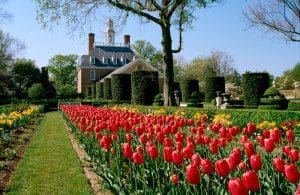
You can stroll throughout the city to view the homes and gardens of the 18th century. Many are original; others have been reconstructed on their original foundations. Flags denote buildings open for tours but some are private residences and offices not open to the public. Market Square is the town common with seasonal outdoor shopping and the principal street is Duke of Gloucester Street, lined with colonial buildings and operating historic taverns. Adjacent to Colonial Williamsburg, tour the beautiful Wren Building at the College of William & Mary, the oldest academic structure still in use in America.
Colonial Williamsburg Restoration
The re-creation and restoration of Colonial Williamsburg began in 1926, funded by John D Rockefeller, Jr. His generous contribution to American heritage secured Colonial Williamsburg as a cornerstone of Virginia’s Historic Triangle (Williamsburg, Jamestown, and Yorktown) and a living showpiece of American history.
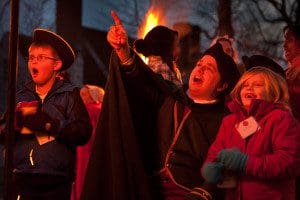
A visit to Colonial Williamsburg will ignite an interest in the fascinating fabric of American history in both children and adults. Seasonal events, including the spectacular Grand Illumination holiday celebration, are a special treat. If you’d like to see history come to life, contact Covington Travel to arrange your Colonial Williamsburg vacation.







[…] of the 1800s, for the last 77 years on the first Sunday of December, thousands of people crowd the living history museum to welcome the holiday season. Image courtesy of Colonial Williamsburg […]